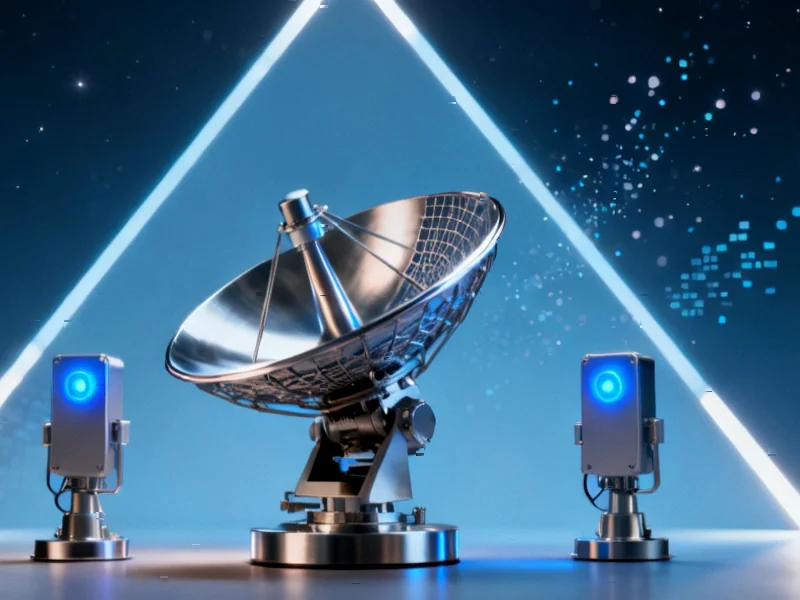Major European Space Consolidation Underway
Three of Europe’s largest aerospace and defense corporations—Airbus, Leonardo, and Thales—have taken a decisive step toward creating a unified space entity through a signed Memorandum of Understanding. This strategic merger of their space activities represents Europe’s most significant response yet to the growing dominance of SpaceX’s Starlink and other global satellite megaconstellations., according to recent innovations
Table of Contents
Strategic Rationale Behind the Merger
The consolidation comes at a critical juncture for Europe’s space industry, which has faced increasing pressure from commercial space ventures and shifting market dynamics. The combined entity aims to leverage complementary strengths across satellite manufacturing, space systems, and ground services to create a more competitive European presence in the global space market., as covered previously
According to industry analysts, the merger addresses several key challenges European space companies have faced individually, including:
- Competition from smaller, more agile NewSpace companies
- Pressure from vertically integrated American competitors
- The need for scale in research and development investments
- European strategic autonomy concerns
Corporate Contributions and Structure
The merger brings together substantial assets from each partner. Airbus will contribute its Space Systems and Space Digital businesses from Airbus Defence and Space. Leonardo brings its entire Space Division, including strategic holdings in Telespazio and Thales Alenia Space. Thales contributes its shares in both Thales Alenia Space and Telespazio, plus Thales SESO.
The ownership structure reflects the relative contributions, with Airbus holding 35% and both Leonardo and Thales maintaining 32.5% stakes each. The companies have committed to a balanced governance structure that ensures joint control while leveraging the unique capabilities of each partner.
Scale and Market Position
The combined entity will emerge as a significant force in the global space industry, with projected annual revenues of approximately €6.5 billion and an impressive order backlog representing more than three years of projected sales. The organization will employ approximately 25,000 professionals across Europe, creating one of the continent’s largest space industry employers.
This scale positions the new company to compete more effectively across multiple market segments, including Earth observation, telecommunications, navigation, and space infrastructure services. The consolidation also strengthens Europe’s position in the rapidly growing satellite communications market, where Starlink has established a commanding lead.
Strategic Implications for European Space Autonomy
The merger aligns closely with European Union and member state objectives to maintain strategic autonomy in space capabilities. In their joint statement, the CEOs emphasized that the partnership “ensures Europe’s autonomy across the strategic space domain and its many applications.”, according to technological advances
This move represents a significant step toward consolidating Europe’s fragmented space industry, which has historically operated through multiple national champions rather than unified European entities. The timing is particularly relevant as European governments increasingly recognize space as a critical infrastructure domain requiring robust industrial capabilities.
Challenges and Workforce Considerations
The consolidation follows significant workforce reductions across the three companies’ space divisions, with approximately 3,000 positions already eliminated in recent years. While the joint statement mentions discussions with worker unions, it remains unclear whether the merger will result in additional job losses or restructuring.
Industry observers note that successful integration will require careful management of overlapping capabilities and different corporate cultures. The companies have committed to a 2027 operational timeline, providing several years for detailed planning and regulatory approvals.
Global Competitive Landscape
The new entity enters a rapidly evolving global space market characterized by:
- Increasing competition from commercial providers
- Growing demand for satellite broadband and connectivity services
- Advancements in satellite manufacturing and launch technologies
- Geopolitical tensions affecting space infrastructure
The consolidation represents Europe’s strategic response to these market dynamics and particularly to the disruptive impact of SpaceX’s vertically integrated approach to space services. By combining resources, the partners aim to accelerate innovation and deliver greater value to customers across government and commercial markets.
Future Outlook and Market Impact
If successfully implemented, this merger could reshape the European space industry and create a more formidable competitor in global markets. The combined entity’s extensive capabilities across the space value chain—from manufacturing to services—positions it to address evolving customer needs more comprehensively than any of the partners could achieve individually.
The success of this ambitious consolidation will depend on effective integration, continued government support, and the ability to innovate at the pace set by commercial space leaders. As the space industry continues its transformation toward more commercial and scalable approaches, this European response represents a crucial test of traditional aerospace companies’ ability to adapt and compete.
Related Articles You May Find Interesting
- Global Economy Loses Trillions Annually From Untapped Workforce Potential, Analy
- Schneider Electric CEO Champions Electrification as Cornerstone of Global Energy
- European Aerospace Giants Forge New Space Alliance to Challenge SpaceX Dominance
- Global Automotive Supply Chain Braces for Semiconductor Disruption as Dutch Chip
- The Hidden Talent Crisis: How Workforce Neglect Undermines Business Performance
References
- https://www.airbus.com/en/products-services/space
- https://www.telespazio.com/it/home
- https://www.thalesaleniaspace.com/fr
This article aggregates information from publicly available sources. All trademarks and copyrights belong to their respective owners.
Note: Featured image is for illustrative purposes only and does not represent any specific product, service, or entity mentioned in this article.



